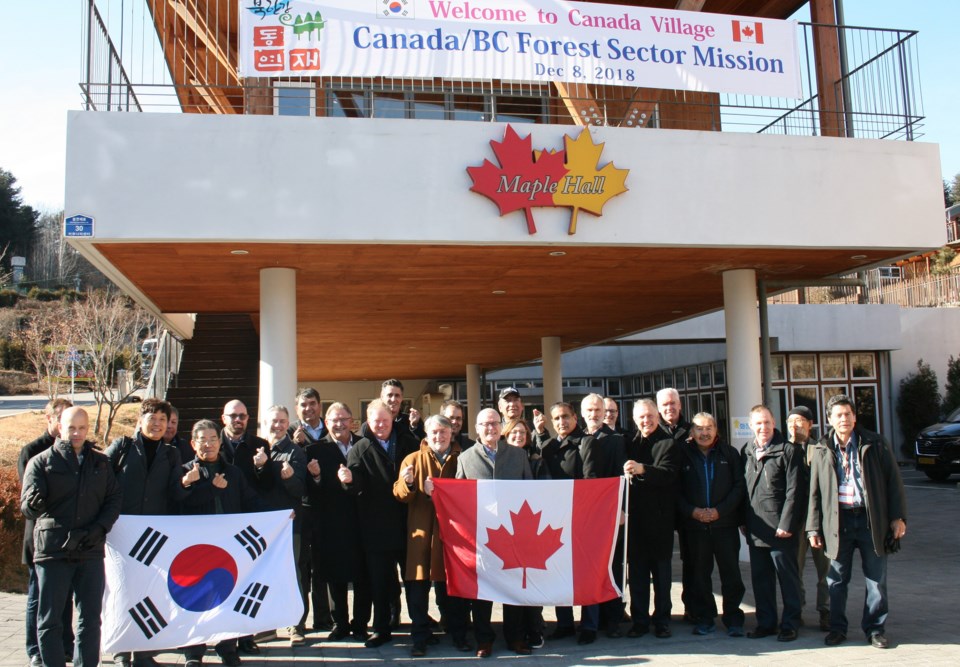Earthquake-prone South Korea is turning to British Columbia wood products to help construct seismically safer buildings.
Representatives from British Columbia’s forest sector are currently on the Forestry Asia Trade Mission across South Korea and Japan. China was planned as well, but that trip has been dropped as of today, Dec. 9.
On Dec. 7 they stopped in South Korea, which is B.C.’s fifth largest market for wood products, to sign a partnership with South Korean architects.
Canada Wood Korea and the Korean Institute of Architects signed a technical co-operation agreement to help raise the skill and knowledge level of architects and designers in Korea so they are better able to work with wood.
“South Koreans’ interest in wood construction is growing because they recognize that wood construction fares better than other materials in the event of earthquakes,” says Doug Donaldson, provincial Minister of Forests, Lands, Natural Resource Operations and Rural Development in a press release.
“By promoting the benefits of wood and sharing technical expertise, we can open up new opportunities in Korea for our province’s high-quality wood products.”
Korea’s efforts to increase the seismic safety of its buildings (through changes to building codes) have generated interest in the seismic design properties of wood.
The Korean Institute of Architects intends to use Canadian practices for technologies such as wood-frame residential housing, wood interior walls and Super-E/Net-Zero housing design.
On Dec. 8 about 150 Korean wood construction and building experts also attended the seismic design symposium organized by Canada Wood Korea, where they toured the Gapyeong Canada Village Project.
The Gapyeong Canada Village is a 154-unit housing project which showcases wood products from B.C. and elsewhere in Canada.
The village was built after a memorandum of understanding between Canada Wood Korea, the Gyeonggi Urban Innovation Corporation and Dreamsite Korea was signed in 2013.
The 2018 Forestry Asia Trade Mission — which takes place from Dec. 5-14 — is one of the largest of its kind, with more than 40 delegates from First Nations, industry, research, labour and government attending.



